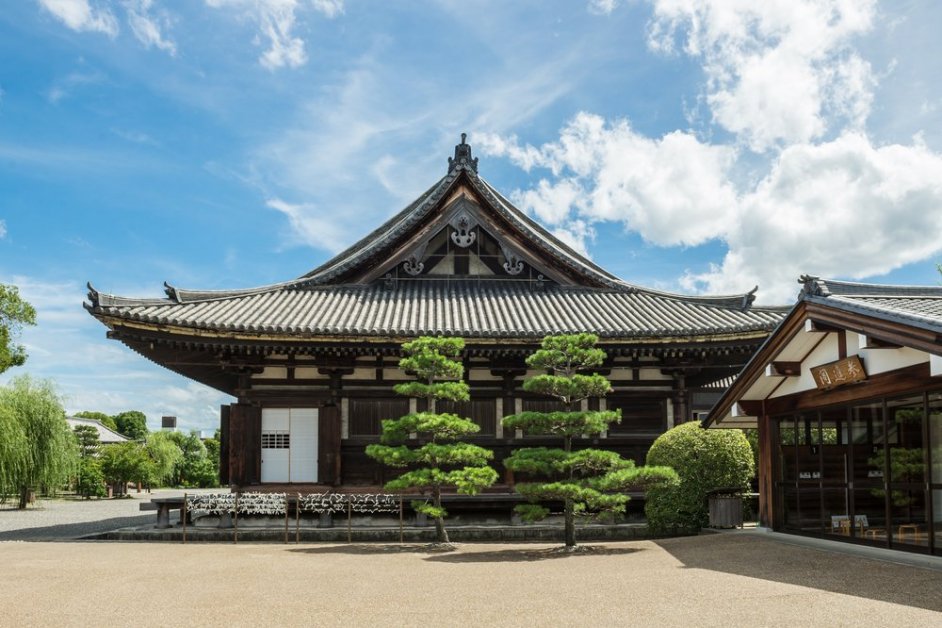
Toh-Shiya at Sanjusangen-do 2026
Held at Sanjusangen-do temple in Japan's ancient capital of Kyoto, Toh-Shiya is the first Japanese archery competition of the..

Sanjusangendo, officially called Rengeō-in, is a Buddhist temple of the Tendai sect located in the Higashiyama district of Kyoto. The temple’s main hall is famous for housing 1,001 statues of Senju Kannon (1,000-armed Kannon), the goddess of mercy. Taira no Kiyamori built the temple in 1164 as a retirement palace for Emperor Go-Shirakawa. Years later, the structure burned down but was reconstructed in 1266. The name Sanjusangendo translates to “a hall with 33 spaces between columns'' and refers to the number of intervals between the temple’s support columns.
The focal point of the temple is its main hall. The impressive one-story building measures 120 meters long, making it the longest wooden structure in Japan. The main hall’s humble architectural style is characterized by its woodwork and slanted roof of wooden shingles. Despite its lack of outward ornateness, the hall’s sheer size commands respect from visitors and exudes a ubiquitous air of sacredness. Apart from the main hall, the grounds are also home to tranquil gardens, temple structures painted in brilliant vermillion, and an annual archery festival called Toshiya Matsuri, where thousands of participants come to test their bow skills and endurance.
Witness the 1,001 Senju Kannon Statues
Inside the main hall, walk among hundreds of golden, human-sized statues of Senju Kannon. The ornately carved statues stand in elegance with two of their 1,000 arms positioned in prayer and their serene faces deep in meditation. Atop their heads sprout additional smaller heads, which, along with goddess’ 1,000 arms, help her better fight human suffering.
In the center of the hall sits a large statue of Kannon, who is positioned similarly in prayer with her multitude of arms fanned out behind her. The 12th and 13th-century statues are carved from Japanese cypress and lacquered with gold leaf, and the large Kannon statue, in particular, is considered a National Treasure. The 1,000 smaller statues are situated on both sides of the seated goddess in ten rows of 50. In front of the first row of Kannon statues, stand 28 additional sculptures of Buddhist guardian deities, many of whom, in contrast to the meditative statues, are poised in protective stances.
The visual of hundreds of golden statues against the wooden hall’s muted walls is a truly awe-inspiring sight. Visitors cannot help but be comforted by the overwhelming sight of the serene goddess of mercy.
Admission to Sanjusangendo costs 600 JPY for adults, 400 JPY for junior/senior high school students, and 300 JPY for children.
Sanjusangendo is about a 7-minute walk from Shichijo Station, and a 20-minute walk from Kyoto Station. For easy access, visitors can take a 10-minute bus ride via buses 100, 206, or 208 from Kyoto Station to Hakubutsukan Sanjusangendo mae bus stop, which is located directly next to the temple.

Held at Sanjusangen-do temple in Japan's ancient capital of Kyoto, Toh-Shiya is the first Japanese archery competition of the..

See the awe-inspiring sight of vast sea of 1000 life sized golden statues of the Buddhist 'goddess of mercy' the bodhisattva..

Held at Sanjusangen-do temple in Japan's ancient capital of Kyoto, Toh-Shiya is the first Japanese archery competition of the..

The temple of 33 intervals gives an undescribeable impression at Sanjusangendo in Kyoto

Oh-mato Taikai (Festival of the Great Target), held in conjunction with the Coming of Age Ceremony. An annual event at Sanjūsa..

The trees and the gardens in Kyoto have been there for hundreds of years. When I am looking at the burrowed view of the mountains..

After decades of vacancy, Nintendo’s former headquarters reopened on April 1, 2022, as the lavish Marufukuro Hotel.

Ladies Inn Guesthouse Usagi-Momiji: by far the best accommodation I have ever found in Kyoto

Veg Out Cafe in Kyoto overlooks the Kamagawa river and as the name suggests provides customers with a place to relax. The design..

Is it possible to eat your way to coolness during summer? A themed afternoon tea event at the Four Seasons Kyoto will serve up a..
 6
6
Dai-ichi Asahi Ramen is a well known Kyoto-style ramen shop located near Kyoto station. The store is known for its shoyu (soya)..

The Kyoto National Museum is one of the major art museums in Japan. Located in Kyoto's Higashiyama ward, the museum focuses on pre-modern Japanese..

The Kamo River (鴨川), meaning “duck river,” is a prominent and scenic waterway flowing through Kyoto Prefecture, Japan. It has long been a cultural..

Kyoto Tower is an observation tower located in Kyoto, Japan. The steel tower is the tallest structure in Kyoto with its observation deck at 100 metres..
Your feedback has been sent.